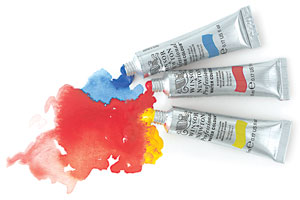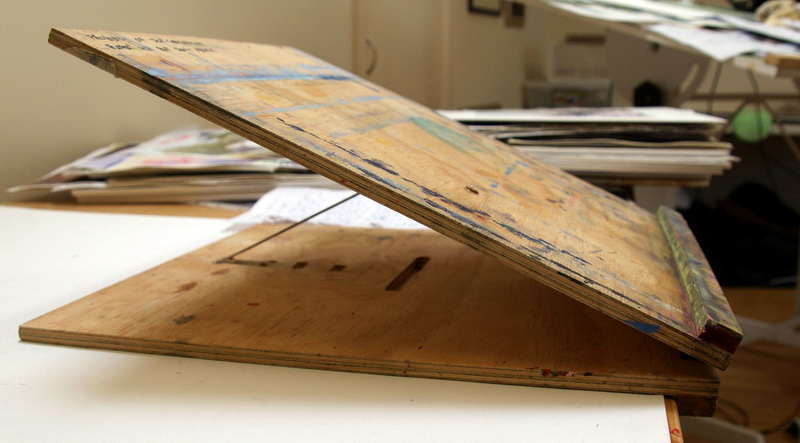Successfully working in Wed Media depends on applying specific principles. There are habits you can develop and things to set up ahead of time that will make all the difference.
Painting in any water-based medium depends on the interaction among four key factors:
- the absorbency of the paper
- how wet or dry the paper is
- how much pigment you are using
- gravity
Begin by setting up your work area properly before you start.
To account for gravity, set your art board at an angle. The steeper the angle, the stronger the force of gravity will be.
This angle is subject to personal preference. Some people like just 20 degrees (equivalent to a couple of textbooks propping up one end of your work surface) while others have a much steeper angle like this:
- Have everything you need on-hand. Lots of clean water and paper towels are a must.
- Try out your colors first. Don’t just blindly jump in.
- Try your colors at different opacities. See what they look like with different proportions of water to pigment.
- Try making a glazing chart to understand color interactions. (You’ll learn how to do this on the next page.)
- Mix colors you know you want to use beforehand and test them on a test strip of paper.
To prevent your work from buckling and warping you should tape your paper or illustration board down with artist’s tape, or work on a watercolor block. This will let the paper block or work board help the paper maintain its shape through repeated applications of wet paint.
Finally, if you’re working on a watercolor block and want to remove your painting, or you need paper for tests and roughs, you should remove your work by inserting a dull knife blade or a credit card into the opening at the top of the block and running it around the perimeter to break the adhesive bond and remove the page.








